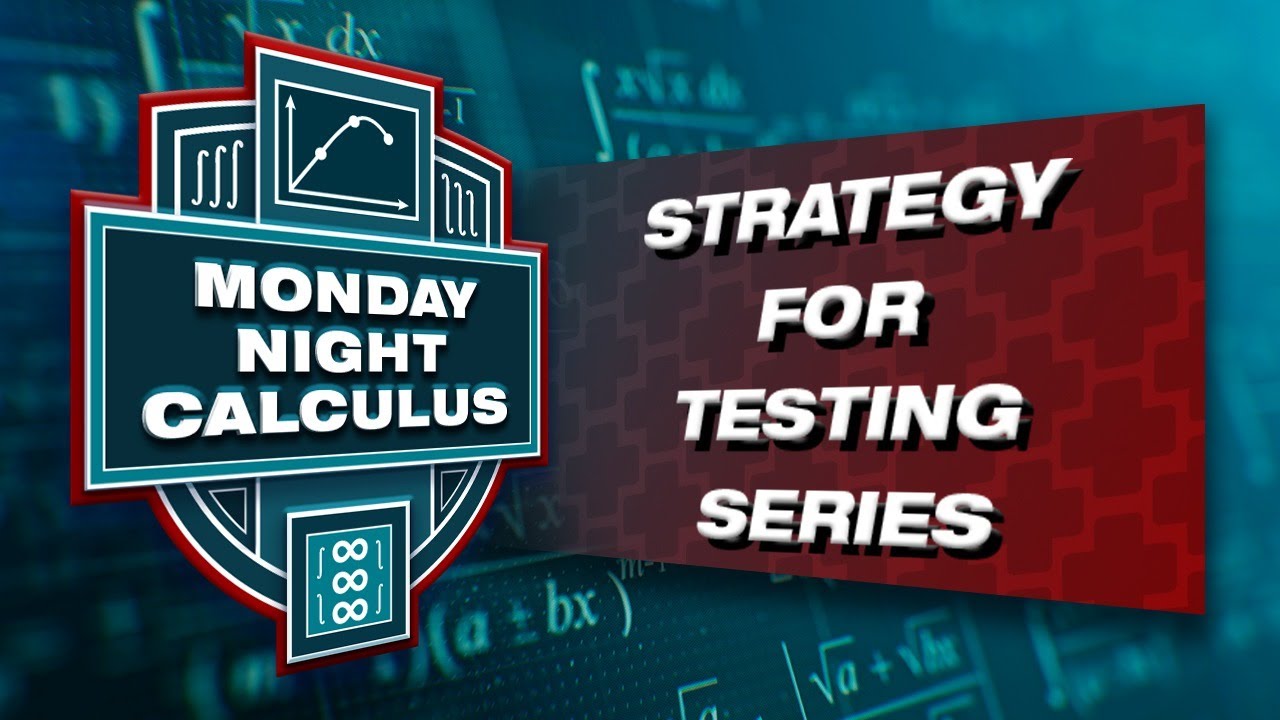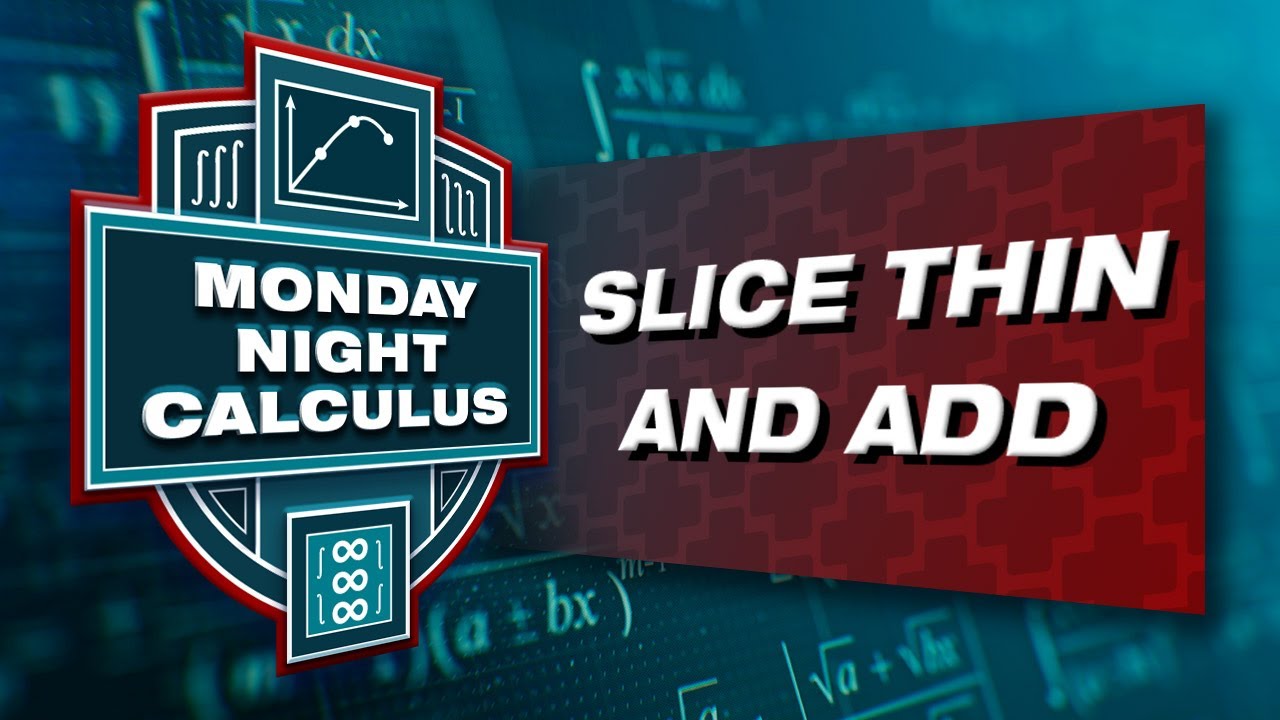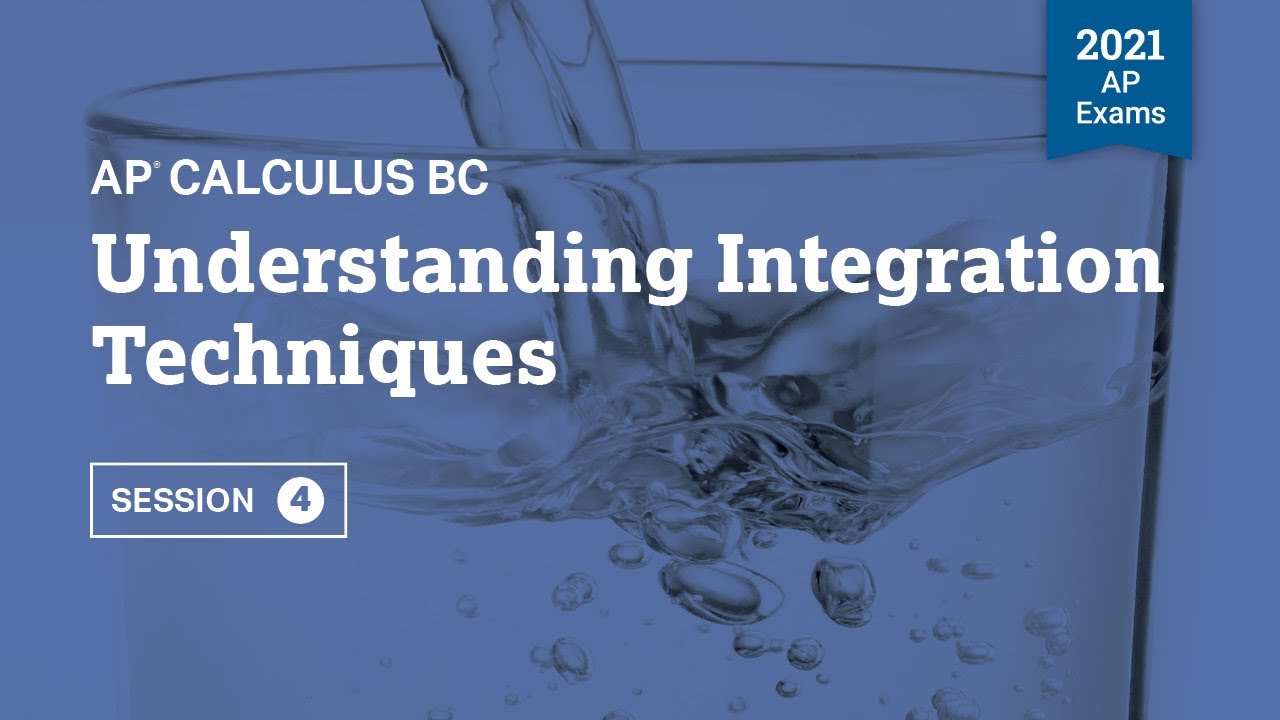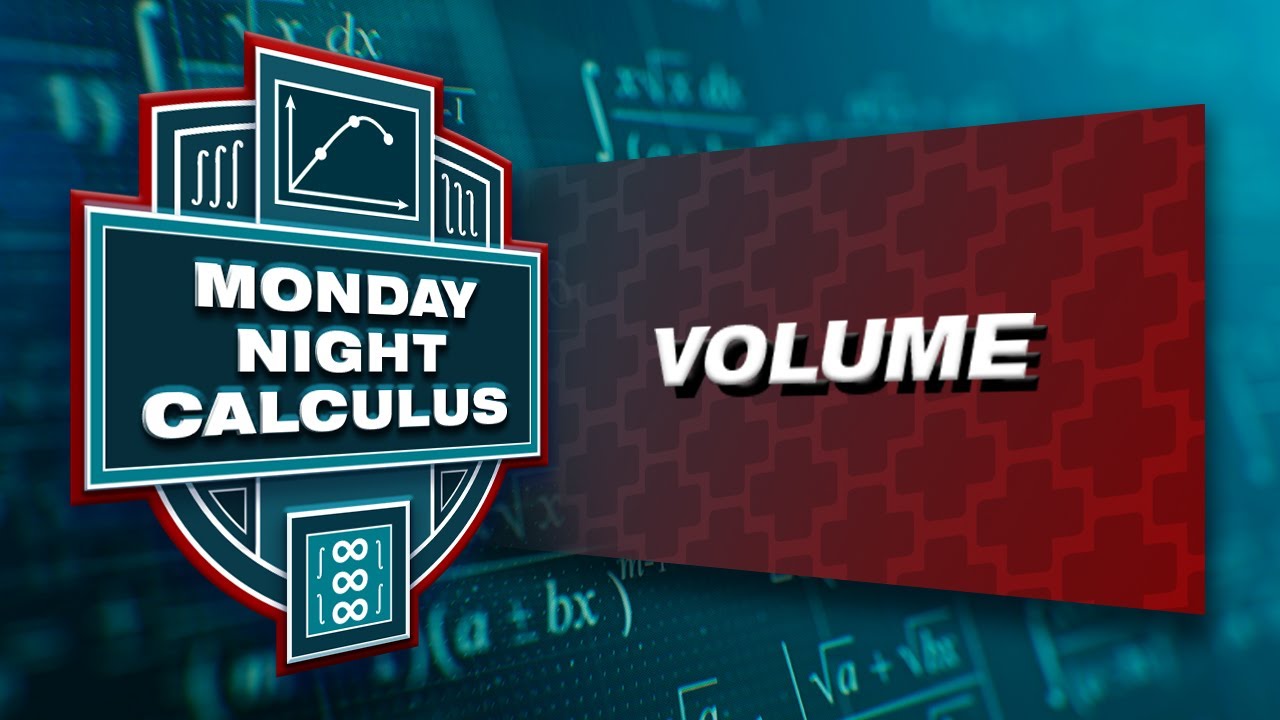Off to Infinity! Series and Improper Integrals
TLDRIn this engaging calculus session, Steve Kokosa and Tom Dick delve into the fascinating world of improper integrals and series. They guide viewers through the process of evaluating integrals and recognizing their convergence or divergence, highlighting the importance of understanding the underlying mathematical concepts. The session also touches on the use of technology for approximations and the significance of the radius of convergence in series. The presenters emphasize the need for precision and the application of various techniques, such as integration by parts and completing the square, to tackle complex problems effectively.
Takeaways
- 📚 The discussion revolves around improper integrals and series, highlighting the importance of recognizing the type of improper integral and the appropriate method to solve it.
- 🔢 Improper integrals require students to evaluate a definite integral and then a limit, emphasizing the two-step process and the pitfalls of treating infinity as a number.
- 🧠 The concept of integration by parts is introduced as a technique to find anti-derivatives for certain types of improper integrals, despite seeming counterintuitive at first.
- 📈 The use of calculus and limit rules, such as L'Hopital's rule, is crucial in dealing with indeterminate forms like infinity over infinity, providing a systematic approach to finding limits.
- 🤔 The importance of proper notation and understanding of mathematical symbols is emphasized, as students often make mistakes by performing arithmetic with infinity.
- 📊 The application of numerical methods and technology, such as graphing and using a calculator, is discussed as a way to approximate and understand the behavior of integrals and series.
- 📝 The process of finding the radius and interval of convergence for a series is detailed, emphasizing the need to check endpoints and recognize common series types.
- 🎓 The educational context of the discussion is centered around exam preparation, specifically for the AP Calculus exam, providing insights into common question types and how to approach them.
- 🤝 The collaborative nature of the discussion between Steve and Tom provides a dynamic learning experience, with different perspectives and complementary knowledge.
- 🚫 The dangers of using improper methods or shortcuts when dealing with integrals that extend to positive and negative infinity are warned against, as they can lead to incorrect conclusions.
- 🌐 The global perspective on the use of technology in education is acknowledged, with the mention of a CAS system and the capabilities of different calculators in solving complex problems.
Q & A
What is the main topic discussed in the transcript?
-The main topic discussed in the transcript is the concept and evaluation of improper integrals, followed by a discussion on series.
What is the first integral presented in the transcript and what is its significance?
-The first integral presented is from one to infinity of the log of x / x to the 4th. Its significance lies in demonstrating the process of evaluating improper integrals and highlighting the importance of recognizing the infinite integral and applying the correct techniques, such as integration by parts, to find the anti-derivative.
What is the mistake that students often make while evaluating the limit in improper integrals as mentioned in the transcript?
-The mistake that students often make while evaluating the limit in improper integrals is trying to treat infinity as a number that can be used in arithmetic operations like addition, subtraction, multiplication, and division. This is incorrect as infinity is a symbol indicating behavior, not a number.
What is the technique used to find the anti-derivative of the first integral discussed in the transcript?
-The technique used to find the anti-derivative of the first integral discussed is integration by parts, which is a common problem-solving technique. This method is applied by letting U be equal to the log of x and dv as the remaining integrand.
How does the transcript demonstrate the convergence of the first improper integral discussed?
-The transcript demonstrates the convergence of the first improper integral by applying integration by parts to find the anti-derivative, evaluating the definite integral, simplifying the expression, and then evaluating the limit. The final result converges to exactly one over n, showing that the improper integral converges.
What is the significance of the graph presented in the transcript for the function y = log(x) / x^4?
-The graph of y = log(x) / x^4 is significant as it visually demonstrates a function that is very close to zero initially but approaches the x-axis quickly, indicating a region of infinite extent but with finite area, which is a counterintuitive yet interesting concept in calculus.
What is the second topic discussed in the transcript and how does it relate to the first topic?
-The second topic discussed in the transcript is series, which relates to the first topic of improper integrals as both involve concepts of convergence and divergence, and the techniques used for their evaluation can be similar, such as limits and algebraic manipulations.
What is the importance of understanding the difference between an improper integral of type one and type two as discussed in the transcript?
-Understanding the difference between an improper integral of type one and type two is crucial because it determines the approach to evaluate the integral. Type one improper integrals involve an infinite limit of integration, while type two improper integrals involve a function that becomes infinite at a certain point within the interval. Recognizing the type of improper integral is the first step in applying the correct method to evaluate it.
How does the discussion on the use of a calculator in the transcript relate to the exam context?
-The discussion on the use of a calculator in the transcript is relevant to the exam context as it provides insights into how technology can be used as a tool for approximation and reality checks in solving problems. It also highlights the importance of understanding the limitations and proper use of a calculator to avoid incorrect assumptions or errors.
What is the main takeaway from the discussion on the radius of convergence and interval of convergence in the transcript?
-The main takeaway from the discussion on the radius of convergence and interval of convergence is the process of determining these for a given series. This involves simplifying the ratio of consecutive terms, taking the limit as n approaches infinity, and setting up the inequality to find the radius of convergence. Additionally, to find the interval of convergence, one must check the behavior of the series at the endpoints.
Outlines
📘 Introduction to the Video and Topic
The video begins with Steve Kokosa welcoming viewers to another edition of Monday Night Calculus. He introduces his colleague Tom Dick and Allison, who will be monitoring the chat. Steve sets the stage for the discussion on improper integrals and series, emphasizing the importance of recognizing and handling infinite integrals. He shares his enthusiasm for the topic due to its blend of various mathematical ideas and the counterintuitive yet correct results it presents.
📗 Dealing with Improper Integrals
Steve delves into the process of evaluating improper integrals, using a specific example to illustrate the steps. He emphasizes the need to recognize the integral's infinity and to solve it through a two-step process involving the evaluation of a definite integral and a limit. Steve also warns against common mistakes, such as treating infinity as a number. He introduces the concept of integration by parts as a technique to find an anti-derivative for the given example.
📙 Applying L'Hopital's Rule and Addressing Common Errors
The discussion continues with Steve applying L'Hopital's Rule to the improper integral example. He highlights the importance of proper limit calculation and simplification. Steve and Tom discuss the potential for students to lose points for using infinity in arithmetic expressions and emphasize the strict guidelines for handling such problems. They also touch on the justification of limits and the importance of understanding the behavior of functions as they approach infinity.
📕 Using Technology for Reality Checks
Tom introduces the use of technology, specifically a calculator, to perform reality checks on the results obtained from improper integrals. He demonstrates how to use the calculator to approximate the area under a curve and compare it with the analytical solution. Tom also discusses the importance of understanding the limitations and capabilities of the calculator when dealing with improper integrals.
📔 Questions and Numerical Techniques for Calculator
The session concludes with a Q&A segment where Steve and Tom address questions about defining functions with variable upper bounds and the numerical techniques used by calculators to evaluate definite integrals. They discuss the potential for calculator approximations to differ from analytical solutions, especially when using different summation methods. The conversation wraps up with a brief mention of an upcoming problem-solving session involving volumes and the integration of regions.
📒 Splitting Integrals at Discontinuities
Steve explains the process of splitting integrals at points of discontinuity, using an example with a function that has an infinite discontinuity at x = 2/3. He demonstrates how to split the original integral into two parts and evaluate each separately to determine if the overall integral converges. Steve also highlights the importance of recognizing the type of improper integral and the correct approach to solving it.
📓 Completing the Square and Solving Indefinite Integrals
Steve discusses the importance of knowing how to complete the square, a technique used in solving indefinite integrals. He works through an example involving a polynomial in the denominator, showing how to rewrite the expression to facilitate easier integration. Steve emphasizes the value of this technique in exam preparation and the need for students to be familiar with it.
📃 Calculating Improper Integrals with Symmetrical Intervals
Tom warns against the mistake of using symmetrical intervals for improper integrals that extend to positive and negative infinity. He illustrates how this can lead to incorrect conclusions about convergence. Tom demonstrates the correct approach of splitting the integral into two parts and evaluating them separately to avoid falling into the trap of symmetry.
🖋️ Finding the Radius and Interval of Convergence for Series
Steve and Tom discuss the process of finding the radius and interval of convergence for a given series. They explain the two-step process of taking the limit of the ratio of consecutive terms and setting this expression less than one to find the radius. They also discuss the importance of checking the series at the endpoints to determine the interval of convergence, providing a detailed example to illustrate the process.
📋 Wrap-Up and Future Problem-Solving Sessions
The video concludes with a brief overview of the problems discussed and a mention of upcoming problem-solving sessions. Steve and Tom thank Allison for her help and inform viewers that more problems will be posted for further practice. They also address a question about the notation for the radius of convergence, clarifying that both lowercase and uppercase R are acceptable as long as the symbol is not redefined elsewhere in the problem.
Mindmap
Keywords
💡Improper Integrals
💡Infinite Discontinuity
💡Series Convergence
💡Integration by Parts
💡L'Hopital's Rule
💡Vertical Asymptote
💡Definite Integral
💡Limit
💡Anti-Derivative
💡Indeterminate Form
Highlights
Introduction to improper integrals and their significance in calculus
Discussion on the importance of recognizing the type of improper integral and the responsibility of the student to identify and solve it
Explanation of the two-step process for solving improper integrals, involving evaluating a definite integral and then a limit
Use of integration by parts as a technique to find an anti-derivative for certain types of improper integrals
Illustration of the concept that infinity is a symbol indicating behavior, not a number that can be used in arithmetic operations
Demonstration of how to handle indeterminate forms such as infinity over infinity when evaluating limits
Application of L'Hopital's rule to improper integrals and the conditions under which it can be used
Discussion on the use of calculators for approximating the value of improper integrals and the insights they can provide
Explanation of the concept of series convergence and how it relates to improper integrals
Demonstration of completing the square as a technique for solving certain types of improper integrals
Presentation of the idea that regions of infinite extent can have finite area, counterintuitive in calculus
Discussion on the importance of proper use of technology when solving calculus problems and the potential pitfalls of blind usage
Explanation of how to find the radius of convergence and interval of convergence for a series
Illustration of the alternating harmonic series and its convergence properties
Emphasis on the need for students to justify their conclusions when solving problems involving series convergence
Conclusion and summary of the main points discussed in the session, including the importance of understanding the concepts and techniques for solving improper integrals and series
Transcripts
Browse More Related Video

5 | MCQ | Practice Sessions | AP Calculus BC

Monday Night Calculus: Strategy for testing series

Fall 2023 MNC: Slice thin and add - Riemann sums and definite integrals

2021 Live Review 4 | AP Calculus BC | Understanding Integration Techniques

Monday Night Calculus: Volume

Monday Night Calculus: Slope fields and differential equations
5.0 / 5 (0 votes)
Thanks for rating: